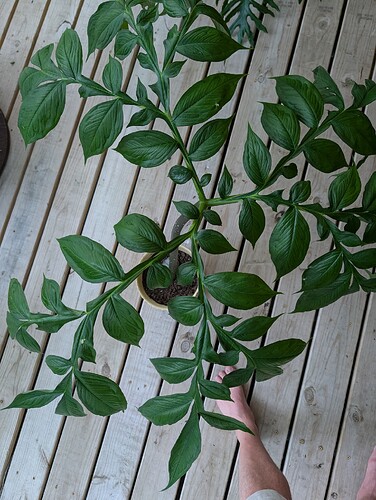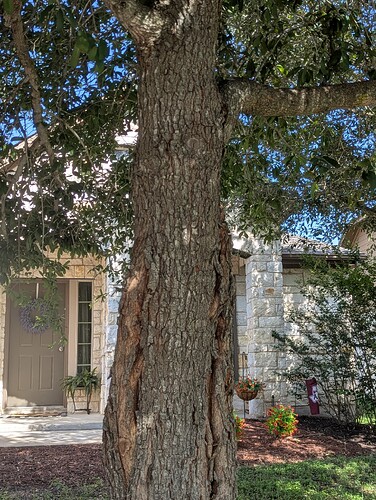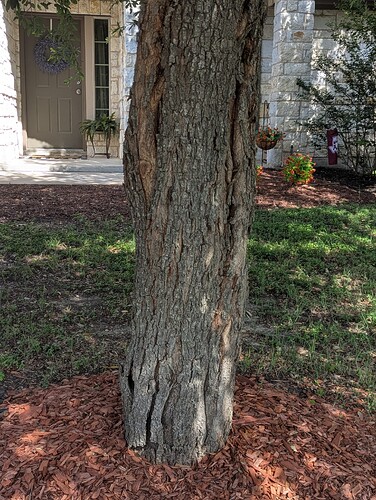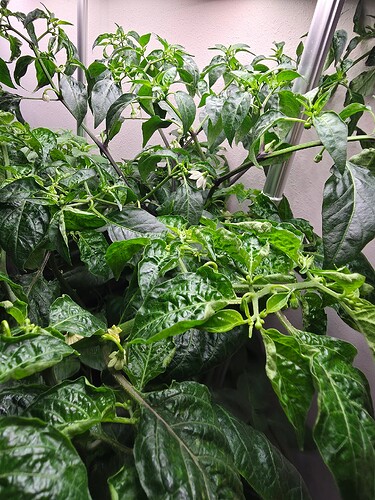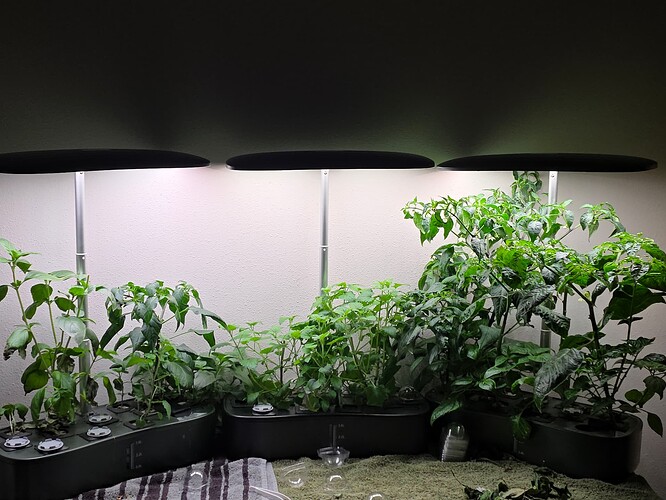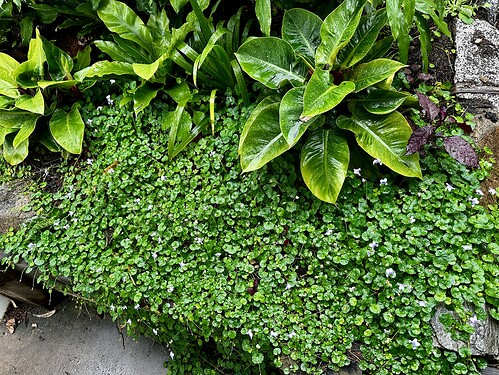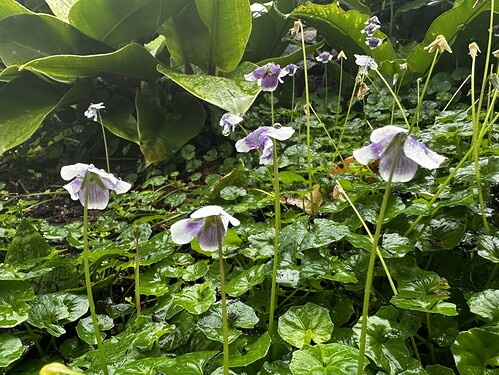I know I’ve posted about this plant before, but it is so interesting and unique that I’m posting again! This is an Amorphophallus konjac bulb. It produces a stalk with a single gigantic leaf. Yes, this is a single leaf about 2 ft across. This is the second year I’ve grown these bulbs. Maybe next year it will flower. The flowers are said to resemble penises, hence the genus name, “shapeless penis”.
Konjac is used in Asian cuisine.
Anyone know what’s going on with this live oak and whether it is contagious? There is probably no saving the poor thing. The property owner DNGAF about the house, much less the trees, and the renters don’t care either.
Plus a bonus mulch volcano ![]()
Best guess based on the delamination of bark, the age of the tree, the type of tree:
Hypoxylon canker on Oak | Texas Plant Disease Diagnostic Lab.
The poor guy was definitely stressed for a long time. Couple of hard freezes, I’ve never seen them water it.
Hope when (not if) it falls in the next major storm, it’s not going to fall on people or homes or cars.
Heads up. Seen it happen plenty.
The fall hazard has been on my mind too. I don’t think it is tall enough to touch our house. Maybe the car on that side of the driveway if the entire thing went down sideways from the base.
Now, the house it’s next to and the car usually parked underneath? Yeah. Those are in danger. If we get another deep freeze with ice like 3 or 4 years ago, it will lose branches at minimum.
I feel bad for it. I hope the good care we take of our trees will help them resist if it is a fungi
that reminds me - i haven’t posted an update on the indoor gardens. i had asked you about using the AreoGarden (mine’s a knockoff), and so i started three (buy two, get 3rd one free).
this is the fish pepper garden, whith multiple blooms:
and here are all three:
L to R, are basil in the first, mint in the middle, and peppers on the right.
i have been cutting away at the herbs. hoping for a good many peppers!
This is looking awesome!
What kind of peppers are you growing there?
oh! they are fish peppers.
i may have mentioned them before. they were brought to.the US by a Haitian man in the 1850s(?). he lived as a free Black man in the Chesapeake Bay area, where he was a chef. his fish peppers are mostly white, as in albino, i guess. they are hot, and when added to a cream-based fish soup, would add spicy punch without changing the color of the soup base. neat!
when i grew them outdoors, the intense south florida sun turned them dark. they were very tasty, and quite hot. so i am hoping for some amount of white fish peppers to experiment with.
Oh… doh! You said that! I did not read carefully enough.
I have never heard of these peppers though! That’s some very interesting history about them.
I planted some native violets and they’ve taken off. This patch has gone from five 100mm pots to covering the best part of a square metre in three months.
Yay for native plants! Those are really pretty too
Having only recently moved to the subtropics where reptiles abound, my new gardening philosophy is “will it be good for the skinks?”, so there’ll be a lot of natives.
That is a gardening philosophy I could get behind! For me, I’m often choosing plants for the bees. Especially the natives. Like grasses that grow hollow tubes for bee overwintering
We’re in that camp too, we love flowers, and so natives that tend themselves get mixed with some not native things we enjoy… on the definitely native side we have scabious, poppies, and fennel, some I’m not so sure about are verbena, and loads of different salvias, which seem very happy either way and the bees, hoverflies, moths and butterflies seem content.
We’ve also gotten into sedums big time, they grow well here and need little to no attention, often sprouting spontaneously, and we have a few others I need to find the name of…
My garden was shady for the first 20+ years, and nothing would grow; it was bare dirt, but then I had to have a huge dying ash tree taken down (damn you, emerald ash borers!), and the virginia creeper moved in, and some wild raspberry, red currant (invasive alien plant, which got pulled out), goldenrod and milkweed.
Last fall I had to have two manitoba maples taken down and a neighbour had a very large tree drastically pruned, so now I have a sunny garden, and I’m planting sun loving plants for pollinators; wild bergamot, wild yarrow, golden alexander, anise hyssop, fragrant sumac, ninebark … I want to plant an eastern redbud tree next year, which will be small and civilised in habit, and will attract pollinators early in the season.
We have a beautiful Mexican Redbud in our backyard. She’s a wee thing yet, but growing well. The Mexican variety made more sense for our central Texas location and the area of the yard. More drought tolerant and heat resistant than Eastern and smaller. We do drip irrigation throughout the year. Long slow sessions to encourage the tree to grow deep.
That’s an interesting option; until recently, we (southern Ontario) were told to plant only trees and plants native to the region, but now, the City forestry dept in Toronto is planting tees that are native to Kentucky and the Ohio valley.
I don’t know that a Mexican redbud would survive our winters, but a neighbour has a subtropical mimosa tree that’s lasted for quite a number of years, and gives quite a show of lipstick pink feathery fronds later in the summer. He loses a limb or two every year to the cold, but what’s left looks healthy.

